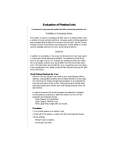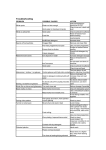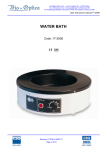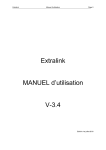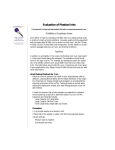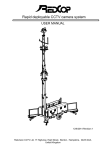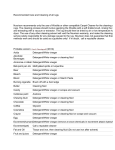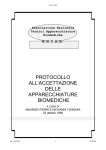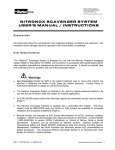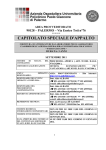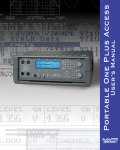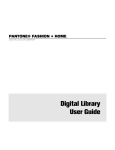Download Bio Color - TUNIC Medical
Transcript
Bio Optica Milano S.p.A. • via San Faustino 58 • I-20134 Milano Tel. +39 02.21.27.13.1 • Fax Acquisti/Export +39 02.21.54.155 Fax Assistenza/Contabilità +39 02.26.41.74.48 • Fax Vendite +39 02.21.53.000 Manuale d’uso/User manual – 16-0070 Bio Color Codice: 16-0070 Revisione 120119 del 19/01/12 Pagina 1 di 10 Bio Optica Milano S.p.A. • via San Faustino 58 • I-20134 Milano Tel. +39 02.21.27.13.1 • Fax Acquisti/Export +39 02.21.54.155 Fax Assistenza/Contabilità +39 02.26.41.74.48 • Fax Vendite +39 02.21.53.000 Manuale d’uso/User manual – 16-0070 USE PRECAUTIONS Before using the instrument, read carefully the instructions and warnings contained in this manual and keep it for further reference. They supply important indications regarding the functions and safety for installing, using and maintaining the instrument. Bio-Optica Milano S.p.A. cannot be held responsible for any damage caused by improper or incorrect use and by the non-observance of any of the prescription provided in this manual and by the safety regulations in force. 1. After unpacking, make sure that the instrument is complete and not damaged by transport. 2. Before connecting the instrument to the power supply make sure that its rating corresponds to that of the power supply. 3. This instrument must only be used for the purpose for which it was designed, that is, as a stainer for laboratory use. Any other use is to be considered improper and therefore hazardous. 4. The instrument must only be used by authorized and professionally qualified technician. 5. The electrical safety of this instrument can be guaranteed only if it is correctly connected to an efficient earth circuit as indicated by current electrical safety regulations. It is necessary to check this fundamental safety prerequisite, and if in doubt, ask to check the circuit. The instrument is provided with a power supply cable having 2 wires + ground tap that have to be connected to the power supply socket. 6. Do not remove the chassis or parts of it during operation. Switch off the instrument and disconnect the power supply cable before opening it. This operation must to be effected only by authorized and professionally qualified technician. 7. To eliminate instrument malfunctioning risks, do not work near strong magnetic fields and do not use transmitters such as cellular phones near the instrument. In case of serious malfunctioning switch off the instrument and contact the Technical Assistance Service. 8. All waste material, both infectious and radioactive, deriving from the appliance working cycle must be disposed in compliance with the regulation in force. This appliance is marked from this symbol, in compliance with EU directive 2002/96/CE regarding electric and electronic appliances waste. This mean that the instrument, at the end of its useful life, must be collected separately from other refuse. The user must deliver it to the special differentiated refuse collection centres, that are predisposed by the public authority. 9. The contents of this manual is subject to change without further notice. 10. Please find enclosed the declaration of conformity. Revisione 120119 del 19/01/12 Pagina 2 di 10 Bio Optica Milano S.p.A. • via San Faustino 58 • I-20134 Milano Tel. +39 02.21.27.13.1 • Fax Acquisti/Export +39 02.21.54.155 Fax Assistenza/Contabilità +39 02.26.41.74.48 • Fax Vendite +39 02.21.53.000 Manuale d’uso/User manual – 16-0070 11. Graphic symbols indicated on the label (positioned near the instrument’s power supply socket): Symbol for CATALOGUE NUMBER: Symbol for SERIAL NUMBER: Symbol for ALTERNATING CURRENT: Symbol for FUSE: Symbol for CONSULT THE INSTRUCTIONS: Symbol for EC MARK: Symbol for IN VITRO DIAGNOSTIC-MEDICAL DEVICE: Symbol for DISPOSAL OF ELECTRIC AND ELECTRONIC EQUIPMENT: Symbol for DATE OF MANUFACTURE: Symbol for MANUFACTURER: Revisione 120119 del 19/01/12 Pagina 3 di 10 Bio Optica Milano S.p.A. • via San Faustino 58 • I-20134 Milano Tel. +39 02.21.27.13.1 • Fax Acquisti/Export +39 02.21.54.155 Fax Assistenza/Contabilità +39 02.26.41.74.48 • Fax Vendite +39 02.21.53.000 Manuale d’uso/User manual – 16-0070 DESCRIPTION Type of Instrument: Automatic stainer Pattern: Bio Color Product Code: 16-0070 Description: Automatic stainer for microbiology histology and hematology. Producer: Sidena (France) Distributor for Italy: BIO OPTICA Milano S.p.A. Marketing 2009 CIVAB Code CAT EGZ PT Size features Size (width x depth x height): 500 x 450 x 450 mm Weight: 12 Kg Electrical Connections Feeding 220 ± 10 % Volt - 50 Hz Power: 120 Watt Other Connections Water Connections: load and exhaust of the washing liquids through two dedicated tanks. Steam suction through an integrated system by active coals filtering. Working features Process Stations: 7 stations. Reagent Stations: 5 plastic reagent-resistant small tanks, 200 capcity ml,each one is closed by a cover. Washing Stations: 1 automatic filling and emptying small tank. Drying Stations: 1 small tank with forced hot air ventilation. Dripping: protection of the small basket durino the transfer through an integrated dripping system. Emptying: automatic emptying of the reagents directly in the small tank. Revisione 120119 del 19/01/12 Pagina 4 di 10 Bio Optica Milano S.p.A. • via San Faustino 58 • I-20134 Milano Tel. +39 02.21.27.13.1 • Fax Acquisti/Export +39 02.21.54.155 Fax Assistenza/Contabilità +39 02.26.41.74.48 • Fax Vendite +39 02.21.53.000 Manuale d’uso/User manual – 16-0070 Features of the control functions Scheduling through a provided memory store card Immersion Time from 1" to 99' 59", at your discretion 1" Interface LCD display indicating the colouring parameter and set-up instrument. Use remarks Bio Color is a steadfast modern automatic stainer and it is mainly turned to the protection and the safety of the operators. The working plan has a small basket server that can move in conformity with the longitudinal axis of the instrument, that carries the 20 rooms small basket from one tank to another. All the small tanks are closed by a cover, which reduces the exhalations in the work room in a drastic way, the whole work cycle takes place by keeping the small tanks closed, with the exception for the working small tank. The movement of the small basket, in addition with an efficient antidripping system that guarantees an excellent protection of the small tanks during the movements of the basket. Instructions before installation Let’s place the instrument in the the suitable places where to use them. (Decree 626/94 – concerning the risks estimation). In addition to the encumbrance size of the instrument, it is necessary to respect the following conditions: - The feeding sources must be arranged close to the placement area. The instrument ha only one point of external electric distribution placed on its back. Let’s check that the size of the electric line of distribution is in conformity with the power of the instrument and that it has the earthing plant (as regards the tension data please check the label on the back of the instrument). - Let’s arrange a sufficient and plane place for the normal use and maintenance of the instrumentm, including the place for the possible peripherical instruments. - The instrument must be places in a covered place that must be safeguarded from the possible contact with the atmospheric agents. - A good lighting is necessary to carry out the working and maintenance phases in a safe way. A normal lighting of the room makes possible to work without any risk that can be generated by some shady areas. - The allowed temperature in order to have a normal working instrument is from +5°C as far as +40°C with a maximum of 80% relative humidity for temperature up +31°C with a constant decrease up to 50 % in case of +40°C. - Do not close the aeration holes and keep it free from all the possible elements that can even partly block them. - Let’s use only the dyestuffs and the reagents that are in conformity with the present in force rules. - Do not use any fitting that has not been provided or allowed by the constructor. - Do not use the instrument if it does no work in the correct way or if it has suffered from some damages. - In order to avoid all the risks of contamination or allergy to the products, please put on gloves while handling the slides of the samples that must be coloured and the dyestuffs or the reagents. Revisione 120119 del 19/01/12 Pagina 5 di 10 Bio Optica Milano S.p.A. • via San Faustino 58 • I-20134 Milano Tel. +39 02.21.27.13.1 • Fax Acquisti/Export +39 02.21.54.155 Fax Assistenza/Contabilità +39 02.26.41.74.48 • Fax Vendite +39 02.21.53.000 Manuale d’uso/User manual – 16-0070 Installation 1-1. Position of the pipes. The water feeding pipes and the pipe to eliminate the residual products come out from the hinder part of the instrument. It must be possible to make pass these pipes towards the water can and the can of collection of the residual products through the bench with a 35 mm diameter hole. This instruction is shown in the picture 1 and 2. It is also possible to pass the pipes between the bench and the wall as to picture 3. The pipes must not go up over 10 cm. The length of the pipes is 1,50 m. The diameter of the pipe of the pump and the removal pipe is different so to avoid all the possible mistakes. Every pipe will be inserted in the corresponding connecting pipe that comes out from the instrument and the pipes locking collars will be installed. The water supply is carried out through a plunged pump that will be dived in a kettle that contains a sufficient quantity of water (from 10 to 20 litres) for the number of the foreseen colourings. The capacity of the can, containing the residual products must be equal, the cans are not provided. If you don’t press any button for four seconds, the display shows again the current temperature. A shifting indicator is in the central position under the display. It is 3 LED, the central one is green, whereas the two side ones are red. There are five possible signals: Revisione 120119 del 19/01/12 Pagina 6 di 10 Bio Optica Milano S.p.A. • via San Faustino 58 • I-20134 Milano Tel. +39 02.21.27.13.1 • Fax Acquisti/Export +39 02.21.54.155 Fax Assistenza/Contabilità +39 02.26.41.74.48 • Fax Vendite +39 02.21.53.000 Manuale d’uso/User manual – 16-0070 1-2. Electric linking. A standard socket with grounding must be placed near the instrument. A feeder will be placed outside the flooding area, for example on a shelf as shown in the picture 2. Current is between 200 e 245 volt, 120 Watt. The add of a standard rippler, whose power is superior or equal to 120 watt, in conformity with the European rules is recommended if the laboratory is often subjected to various black-outs. Let’s connect the pump and the tension outlet from the feeding block as far as the hinder part of Bio-Color. The two sockets are different different so to avoid all the possible mistakes. The ON-OFF switch is in the left hinder part. Press OFF before connecting the feeder. The connections are summarized in the below plan. Revisione 120119 del 19/01/12 Pagina 7 di 10 Bio Optica Milano S.p.A. • via San Faustino 58 • I-20134 Milano Tel. +39 02.21.27.13.1 • Fax Acquisti/Export +39 02.21.54.155 Fax Assistenza/Contabilità +39 02.26.41.74.48 • Fax Vendite +39 02.21.53.000 Manuale d’uso/User manual – 16-0070 Operation Let’s insert the smartcard that contains the protocols that you want ot carry out. The label of the smartcard must be turned to the front part of the dye. The smartcard cannot be changed while colouring. Before colouring please check that the pipes are plunged in the cans, water can is full and all the connections have been carried out. Please check that the cartridge of the coal filter has been placed in the correct way A first test of the instrument can be carried out even if the small tanks are not full of dyestuffs. Let’s open the cover and check that nothing will stop the operation of the instrument. Let’s use the switch to start tension. The arm of the instrument must be put left. Organisation of the menus The stainer has 4 buttons under the screen: The first appearing menu is: Gram Hucker Run protocol Other stain Other chioces The first line shows the latest carried out stain (for example Gram Hucker). Run protocol starts this stain procedure. Staining can involve a “critical” stage, whose length can change according to the characteristics of the pattern. This takes place for example during the phase of differentiation in a GRAM stain. In this case, after “carry out” drive, we have to choose among a short, middle or long length. The long length is equal to the normal length if increased of 30% and the short length is equal to the normal length if decreased of 30%. We will have to try to assemble in one only small basket the patterns that have the same characteristics. The choice “other colouring” makes possible to install one of the other colourings of the smartcard Revisione 120119 del 19/01/12 Pagina 8 di 10 Bio Optica Milano S.p.A. • via San Faustino 58 • I-20134 Milano Tel. +39 02.21.27.13.1 • Fax Acquisti/Export +39 02.21.54.155 Fax Assistenza/Contabilità +39 02.26.41.74.48 • Fax Vendite +39 02.21.53.000 Manuale d’uso/User manual – 16-0070 “some other choices” make possible to enter the second menu Bath layout Emp.1 tank Emp. all Other choices “Small tanks plane makes possible to know the names of the different reagents that must be contained in the small tanks for the colourings suggested on the paper” the two choices of emptying make possible to drain away the used reagents to the drum that assembles the residual products . Please make sure that this drum can still contain them. It is then necessary to replace the basket by using the suction pipe that is placed on the right side of the arm and confirm the choice according to the instructions. “Tools” makes possible to enter the third menu Clean water tank Drying Time modification Original time schedule “Cleaning the water tanks” makes possible to check the regular working of the pumps of the water tanks. This function must be used to prime the pump whenever we plunge it again in the drum, as well as regards the cleaning of the water tanks and the pipes (see below “Maintenance and cleaning). “Drying”: it takes 10 minutes to dry up; it can be stopped in every moment. It is possible to change the length of every single stage of a colouring. The new values must be written on the paper, but paper also keeps the standard values that can be reinstalled by choosing “Original lengths”. In order to change the lengths, first of all we must choose the number of the stage that we want to change. Then we change its length thanks to the two central buttons (+/-). If we keep our finger on a button, length runs more quickly. We press “Ok” to confirm and then we can choose another stage to modify the length. At the end of the different changes “esc” leads us to the final choice that makes possible to confirm or cancel all the changes of length that have just been made. Operation setting of the apparatus 1. 2. 3. 4. 5. 6. 7. 8. Control of the tanks plane Fill the tanks with the dyestaff up to the shown point Control of the level of the rinsing water in the drum Control of the waste water container Install a dry anti-drops buffer on the suitable tray Switch the colouring agent and it starts. Install the basket of the slides Choose and start colouring Let’s always check the levels of the drums before starting a colouring. Revisione 120119 del 19/01/12 Pagina 9 di 10 Bio Optica Milano S.p.A. • via San Faustino 58 • I-20134 Milano Tel. +39 02.21.27.13.1 • Fax Acquisti/Export +39 02.21.54.155 Fax Assistenza/Contabilità +39 02.26.41.74.48 • Fax Vendite +39 02.21.53.000 Manuale d’uso/User manual – 16-0070 Maintenance and cleaning The apparatus must always be clean. Uniquely water and soap will be used to clean the external parts. The used anti-drops buffers must be those provided by the manufacturer and we must absolutely avoid using some spongy materials that harden after drying up and that can block the apparatus. Buffers can be cleaned by using water or soap or by rapid drying thanks to some solvents. The second menu makes possible to start the automating emptying system and it makes possible to send the dyestaff of the tanks to the drum of the residual products. Therefore It is easy to remove the small tank so to clean it. According to the dyestaff it will be possible to use water and soap, alcohol or acetone. This kind of cleaning must be really carefully made so to prevent from inhaling vapours. Tanks must not be left in contact with some strong solvents for a long time. The water tank is not removable. It is possible to clean it by filling-emptying (see the third menu) after plunging the pump in a container with water and bactericide. Let’s rinsing several times by using clean water. We must be sure that the two screws on the top on the right side of the tank are always clean because they reveal the level of the water. The coal filter must be changed after 100 colourings or at least every three months Revisione 120119 del 19/01/12 Pagina 10 di 10










